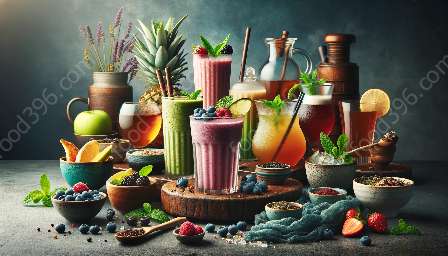Tea blending and flavoring is a fascinating aspect of the world of tea that involves a delicate balance of art, science, and creativity. It is a process that transforms simple tea leaves into a rich tapestry of flavors, aromas, and colors, ultimately creating unique and exceptional teas that captivate the senses.
The Art of Tea Blending
Tea blending is an age-old tradition that dates back to ancient times when traders and merchants recognized the potential to create premium teas by combining different varieties and qualities of tea leaves.
At its core, the art of tea blending involves the skillful selection and combination of various tea leaves, flowers, herbs, spices, and fruits to achieve a specific flavor profile or to enhance the existing characteristics of the tea. Master blenders possess a deep understanding of the flavor nuances and aromas of different tea varieties, allowing them to craft harmonious blends that are greater than the sum of their parts.
The Science of Tea Flavoring
Tea flavoring is a meticulous process that involves the infusion of natural or artificial flavorings into the tea leaves. Flavoring can enhance the tea's natural taste or add a completely new dimension to the blend. The science of tea flavoring requires an in-depth knowledge of the properties of the flavoring agents and how they interact with the tea leaves.
Blending and flavoring involve an array of sensory experiences, including the sight, smell, taste, and touch of the final product. The colors and aesthetics of the blends, the aroma that wafts from the cup, the taste that lingers on the palate – each aspect contributes to the overall sensory appeal of the tea.
The Role of Herbal, Fruits, Spices, and Flowers
When it comes to tea blending and flavoring, the possibilities are virtually endless. Herbs such as mint, chamomile, and lemongrass can add a soothing and refreshing touch to the tea, while fruits like berries and citrus fruits can infuse vibrant and juicy flavors. Spices such as cinnamon, ginger, and cardamom can provide warmth and complexity, and flowers like jasmine and rose can impart delicate floral notes. Each ingredient brings its own unique character to the blend, contributing to a sensorial symphony that tantalizes the taste buds.
The Journey of Taste and Tradition
Tea blending and flavoring have evolved into an art form that reflects the diverse cultures and traditions of tea-drinking societies around the world. In China, the birthplace of tea, centuries of refinement have led to the creation of exquisite flavored teas such as jasmine-scented green tea and osmanthus-infused oolong tea. In India, the land of chai, a rich tapestry of spices and herbs are combined with robust black tea to create the beloved masala chai. Japan presents its own unique take on tea blending with matcha, a finely ground powdered green tea that is renowned for its vibrant color and umami flavor.
The world of non-alcoholic beverages also benefits from the art and science of tea blending and flavoring. Teas are often utilized as a versatile base for a wide range of beverages, including iced teas, tea lattes, and tea-infused cocktails. The use of different flavor profiles and creative combinations allows for the creation of refreshing and innovative non-alcoholic beverages that cater to a diverse consumer base.
Conclusion
Tea blending and flavoring embody the magic of transformation, turning humble tea leaves into extraordinary elixirs that delight and inspire. Whether enjoyed as a cozy cup of comfort or as the star ingredient in a trendy beverage, the art and science of tea blending and flavoring continue to enhance the tea culture and elevate the world of non-alcoholic beverages with their boundless creativity and allure.

